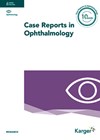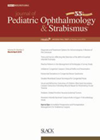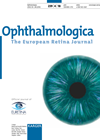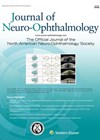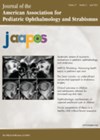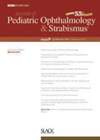You searched for "occlusions"
OCT angiography sign after whiplash
7 December 2020
| Annes Ahmeidat
|
EYE - Vitreo-Retinal
Berlin’s oedema is a rare condition following blunt ocular injury and a rare finding after whiplash injury. This case describes a 48-year-old male who suffered a seventh vertebrae fracture from a traffic accident. Two days later, decreased left eye visual...
Dichoptic vs occlusion therapy outcomes for anisometropic amblyopia
The authors evaluated a binocular Tetris game for Android phones and compared its effectiveness, compliance and adverse events with part-time patching in children with anisometropic amblyopia. This was a prospective randomised study. Group 1 played the game for two hours...Conservative management of concomitant strabismus
1 October 2019
| Joe Smith
|
EYE - General
The aim of management for all patients with strabismus should centre around four goals: to prevent amblyopia, to alleviate symptoms, to restore binocular single vision (BSV) and to improve ocular alignment. The conservative management options available for strabismus include observation,...
Efficacy and safety of intravitreal faricimab in nAMD, DME and RVO
30 January 2025
| Sofia Rokerya
|
EYE - Vitreo-Retinal
This paper is an analysis of data extracted from 13 eligible studies in the context of neovascular age-related macular degeneration (nAMD), diabetic macular edema (DME), and retinal vein occlusion (RVO), collected from systematic literature search of MEDLINE, Embase, and Cochrane...
Shifting the paradigm of managing patients in medical retina: how real-world data can help us to improve clinical practice
1 February 2015
| Pearse A Keane (Prof), Adnan Tufail
|
EYE - Vitreo-Retinal
The ophthalmic subspecialty of ‘medical retina’ has undergone dramatic changes in recent years. With the introduction of ranibizumab (Lucentis, Novartis), a specialty formerly dominated by laser-based therapies has been transformed to become, in large part, pharmacotherapy-based. To date, these pharmacotherapies...
Management of squint with near-distance angle disparity
These are a group of strabismus disorders where the angle of misalignment is different between near and distance. The focus of this article will be on the patients where the angle for near exceeds the distance angle by more than...The role of aspirin in the treatment of NAION: Benefits and controversies
4 December 2024
| Ali Yagan
|
EYE - Neuro-ophthalmology
Non-arteritic anterior ischaemic optic neuropathy (NAION) is the most common acute optic neuropathy in individuals over 50 with estimated prevalence of 2–10 per 100,000 people, characterised by sudden, unilateral vision loss due to ischaemic injury to the optic nerve head....
Assessment of slow and fast vergence in stroke survivors
5 April 2022
| Lauren R Hepworth
|
EYE - Neuro-ophthalmology
The authors present the findings of a prospective cohort study. Three hundred and five stroke survivors were recruited consecutively. The following exclusion criteria were applied; aphasia, cognitive impairment, visual inattention, ocular motor nerve palsy and neuromuscular disease. Fifty age-matched controls...
Age-related distance esotropia – what are the clinical characteristics?
The authors present a retrospective case review of individuals with primary divergence insufficiency or age-related distance esotropia, over a 15-year period. Inclusion criteria allow for the difference between near and distance angles to be patient reported or objectively measured. One...Should we move towards procedure-specific consent forms?
1 October 2017
| Shizhuan Tan, M Arunakirinathan, A Rajasekaran, SA Sadiq
|
EYE - General
The consent process represents the patient’s acceptance of the information provided to them and an agreement to undergo an intervention as suggested by a health professional. Effective doctor-patient communication, ensuring the succinct delivery of the necessary points in a way...

